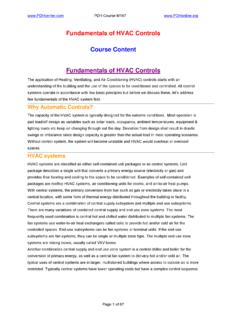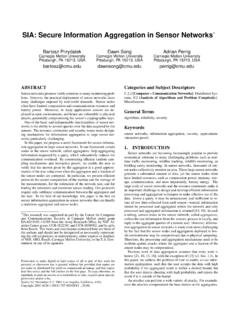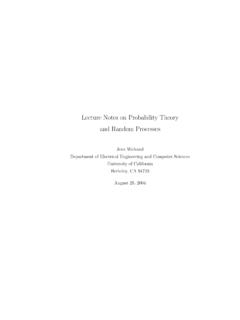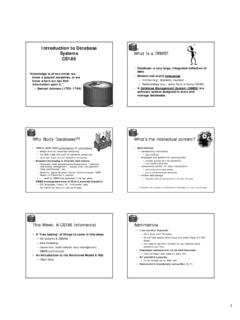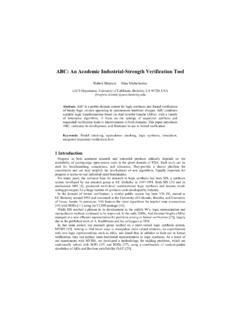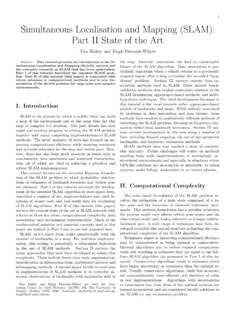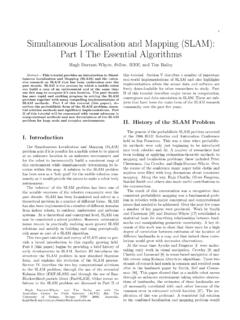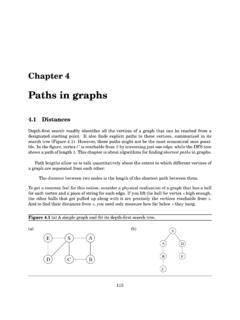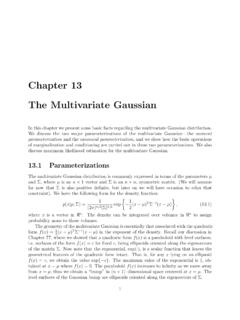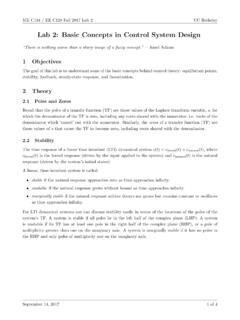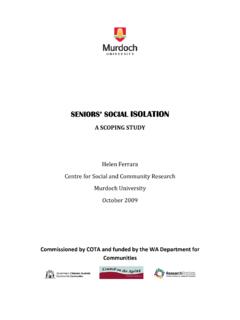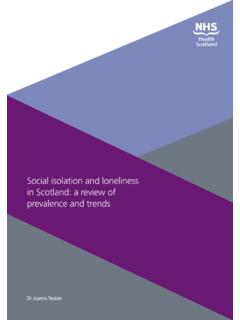Transcription of Loneliness, social support networks, mood and wellbeing in ...
1 loneliness , social support networks, mood andwellbeing in community - dwelling elderlyJeannette Golden1, Rona n M. Conroy2*, Irene Bruce3, Aisling Denihan3, Elaine Greene3,Michael Kirby3and Brian A. Lawlor11St Patrick s Hospital, Dublin2 Royal College of Surgeons in Ireland3 Mercer s Institute for Research on Ageing, Dublin, IrelandSUMMARYO bjectiveBoth loneliness and social networks have been linked with mood and wellbeing . However, few studies haveexamined these factors simultaneously in community - dwelling participants. The aim of this study was to examine therelationship between social network , loneliness , depression, anxiety and quality of life in community dwelling older peopleliving in thousand two hundred and ninety-nine people aged 65 and over, recruited through primary care practices,were interviewed in their own homes using the GMS-AGECAT.
2 social network was assessed using Wenger s of participants were lonely, with 9% describing it as painful and 6% as intrusive. Similarly, 34% had a non-integrated social network . However, the two constructs were distinct: 32% of participants with an integrated social networkreported being lonely. loneliness was higher in women, the widowed and those with physical disability and increased withage, but when age-related variables were controlled for this association was non-significant. wellbeing , depressed mood andhopelessness were all independently associated with both loneliness and non-integrated social network . In particular, loneliness explained the excess risk of depression in the widowed. The population attributable risk (PAR) associated withloneliness was 61%, compared with 19% for non-integrated social network . Taken together they had a PAR of 70%ConclusionsLoneliness and social networks both independently affect mood and wellbeing in the elderly , underlying avery significant proportion of depressed mood .
3 Copyright#2009 John Wiley & Sons, words loneliness ; social support networks; depression; hopelessness; wellbeingINTRODUCTIONH umans are social beings. Baumeister and Leary(1995) have even proposed that our need to belong is afundamental one, driving thoughts, emotions andinterpersonal behaviour. Older adults are no excep-tion. Depp and Jeste (2006) reported that older adultsmore commonly endorse social engagement thanphysical health when describing successful is now clear evidence for the health-promoting effects of social relationships (Fratiglioniet al., 2004), with socially isolated people having atwo- to four-fold increase in all-cause mortality. Thereare several pathways by which social relationshipsmay affect health, one of which may be in theprovision of social support . Deficits in social supporthave been associated with a wide variety of adversehealth outcomes in older age (Uchino, 2006; Reblinand Uchino, 2008), ranging from physical health todepression and self-harm (Denniset al.)
4 , 2005).Aside from objective deficits, social relations maybe subjectively deficient. loneliness is the subjectiveexperience of social isolation . It has been defined as anunpleasant subjective state of sensing a discrepancybetween the desired amount of companionship oremotional support and that which is available in theperson s environment (Blazer, 2002). The healtheffects of loneliness have been less well studied thanINTERNATIONAL JOURNAL OF GERIATRIC PSYCHIATRYInt J Geriatr Psychiatry2009;24: 694 online 9 March 2009 in Wiley InterScience( )DOI: *Correspondence to: Dr R. M. Conroy, Department of Epidemiol-ogy, Royal College of Surgeons in Ireland, Beaux Lane House,Dublin 2, Ireland. E-mail: John Wiley & Sons, 9 July 2008 Accepted 27 October 2008those of social networks, however, loneliness has beenassociated with a variety of negative health outcomes(O Luanaigh and Lawlor, 2008), including anincreased risk of all cause mortality (Seeman,2000), and of suicide (Waernet al.
5 , 2003). The lonelyhave an increased risk of depression (Cacioppoet al.,2006) and one study reported that the excess mortalityin the elderly depressed was confined to those whowere lonely (Steket al., 2005).Few epidemiological studies have clearly distin-guished between objective and subjective socialisolation, but among those that have, some evidencesupports a significant adverse effect of each on health(Cacioppo and Hawkley, 2003; Cacioppoet al., 2006;Coleet al., 2007).In this study, we attempt to identify the relativecontributions of subjective social isolation ( loneliness )and objective social isolation , measured as supportnetwork type, to wellbeing , depression and hope-lessness in a large representative sample of com-munity- dwelling people aged 65 and and measuresCommunity- dwelling people aged 65 and over wererecruited from the registers of five Dublin urbangeneral practices between 1993 2002 as part of theDAHMS study.
6 The sex and age of the sample issimilar to those of the 1991 population census for theelderly Dublin population (Kirbyet al., 2000). Ethicalapproval for the study was given by the FederatedDublin Hospitals Ethics Committee. Consentingparticipants were interviewed at home. Ratings ofpsychiatricsymptomsweremadeusingtheGer iatric Mental State (GMS) diagnostic interview,which is administered using a computerised semi-structured interview, the GMS-AGECAT (Copelandet al., 1988).Lonelinesswas based on three GMS items. The firstitem asks Do you feel lonely? . This item will bereferred to as simple loneliness . The second rateswhether the participant cannot turn away from theirloneliness. It will be referred to as intrusiveloneliness . The third, rates being bothered ordistressed by current loneliness .
7 We will refer to thisproperty as painful loneliness . social networkswere assessed using the Prac-titioner Assessment of network Type scheduledeveloped by Wenger (Wenger, 1991; Wenger andTucker, 2002). The schedule classifies social networkinto one of five types. In this analysis, we will contrastthose with a locally integrated social network ,identified by Wenger as optimal in older age, withthose having any other sort of depressed moodpresent in the monthprior to interview was assessed using GMS ofhopelessness and suicidal feelingswasassessed using GMS ratings on five symptoms:whether life was seen as not worth living, seeingthe future as bleak, having a general feeling ofhopelessness or despair, wishing to die in the monthprior to interview, and death wishes expressed as eithersuicidal plans or acts or wishing to be dead butrejecting assessed using two GMS items,lifesatisfactionandhappiness.
8 The presence of significantphysical disabilitywas rated by the impairmentdefined as a score of less than24 on the Mini-Mental State Examination of Folsteinet al. (1975).Demographic and personal data were collectedusing the minimum dataset designed for the Ageing inLiverpool: Health Aspects (ALPHA) study (Saunderset al., 1993).Statistical methodsData were analysed with Stata/SE, release 10. Theeffects of risk factors were calculated using logisticregression and are expressed as Odds Ratios (OR).Logistic regression was also used as a basis forcalculating prevalences adjusted for confoundingfactors. We calculated the attributable risk fractionin the population and in the exposed, based onpredictedprevalencesderivedfromlogisti cregression, as a measure of the effect size of lonelinessand social network on risk of depression corrected forconfounding were 1,342 participants.
9 We omitted 44participants in whom social network could not beclassified, leaving a final sample of 1,299, of whom64% were women. The median age was 73. Almosthalf (49%) were currently married, with 38%widowed. Women differed from men in their maritalstatus, being more likely to be widowed (47%) thanmen (23%,p< ). The majority (71%) were in themanual social classes, with 19% classed as unskilledmanual. Significant physical disability was presentin 11% of participants, and cognitive impairmentin 14%.Copyright#2009 John Wiley & Sons, J Geriatr Psychiatry2009;24: 694 : , social support , mood and wellbeing695 Two-thirds of participants (861, 66%) had a locallyintegrated social network . Of the remainder, 273(21%) belonged to the network types described byWenger as restricted , of which most (73%) belongedto the family dependent type.
10 Finally, 165 partici-pants had transitional networks, intermediatebetween the locally integrated and restricted data analysis suggested no differencesbetween the various types of restricted and transitionalnetworks. The analysis which follows will thuscontrast locally integrated networks with all non-integrated types of one-third of participants [ ; 95%Confidence Intervals (CI) ] reportedloneliness in the previous month. Prevalence ofpainful loneliness was (95% CI )and that of intrusive loneliness was (95% CI ). While painful and intrusive loneliness werecorrelated (p< , Chi-squared test) there wasconsiderable non-overlap between the two 145 participants ( ) reported one or otherfeature, only half of these (71 participants) was significant overlap between lonelinessand social isolation in our sample; 40% of those with anon-integrated network were lonely, and a similarpercentage (39%) of the lonely had a non-integratednetwork.
